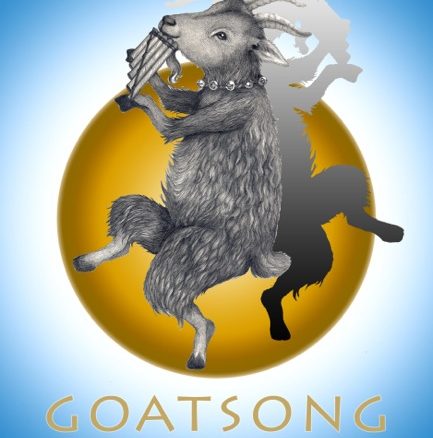|
The structure of Goatsong was inspired by a story I used to read to my sons, The Day Jimmy’s Boa Ate the Wash. The mother in the story played a kind of deadpan backup comedian as she asked her son about his school field trip that day, the storyline consisting of her questions and his increasingly outrageous answers. The story unfolded with all the mishaps and horrors any grade school teacher could dream of! We could not stop laughing as I read it. It was one of those books my sons requested over and over.
As a child I loved to ask my mother and grandmother for stories. Tell me the story of how Uncle Lloyd put the skunk in the barrel and it shot Uncle Wayne in the eye. Tell me the time when Uncle Lloyd and Dr. Pistorius were little and locked their teacher in the belfry at school. Their stories, usually full of humor and mischievous capers, formed a kind of mythology in our family: how kids were given the space for play and creative mischief but always reeled back into the safe confines of parental supervision, how hardship was met with good humor and fun, how family relationships endured, regardless. I listened for the nuances, what was important, how they lingered on this point or that. How a story changed over time. Of course my child-mind did not intellectualize about these changes. I only noticed them, pointing them out, seeing what my mother or grandmother said and their expressions as they spoke.
A lot of my job as analyst involves asking questions: questions that open inquiry, invite curiosity into dark places, direct the way while also respecting the unknownness of the terrain we are entering. I love listening to people’s stories and their answers to my questions, my questions disguised with thin veneer of naiveté.
When the characters of Goatsong developed, or shall we say, assembled! over several years’ time, I listened. Sophia, the ten year old child in the stories, was now an adult, and she was telling her foster daughter about her own lonely childhood growing up in the fictitious community of Huckleberry, and about how her life changed in her eleventh year through friendships with a goat woman Nelda, two homeless women, Dee and Ester, and a small herd of goats. But now, in my mind’s ear, Sophia was answering her daughter Stace’s questions, questions that belied how many times Stace had heard these stories. As I listened closer, I realized that there was a larger point of view being presented, and a poignancy, one of a final telling, a punctuation.
In the introduction Sophia writes:
By Fisher King Press. Estimated Shipping Date Oct 31, 2012 – Advance Orders Welcomed.
|

Goatsong: A Novel GOATSONG: Questions and Personal Mythology